Investigation into the Relationship between Super-Knock and Misfires in an SI GDI Engine
Abstract
1. Introduction
2. Experimental Setup and Methodology
2.1. Experimental Setup
2.2. Experimental Methodology
3. Results
3.1. Abnormal Combustion without Pressure Oscillation n
3.2. Super-Knock in Fired Cylinder
3.3. Super-Knock in Misfired Cylinder
4. Discussion
4.1. Knock and Abnormal Exhaust Pipe Pressure
4.2. Knock Caused by Blow-By during the Period of Exhaust Valves Overlapped
4.3. Knock Caused by Residual Gas
5. Conclusions
- A misfire in one cylinder would induce super-knock in the other cylinders. The maximum pressure amplitude could reach 200 bar, accompanied by intense pressure oscillations. The abnormal combustion usually occurred in the next and last ignition cylinder corresponding to the misfired cylinder.
- The unburned mixture of the misfired cylinder could be ignited by compression near the TDC, and even induce super-knock. At low speed and full load conditions, misfire was an important factor to induce super-knock.
- A misfire in one cylinder could induce pre-ignition. The in-cylinder pressure profile significantly deviated from the normal combustion cycle at 30 °CA BTDC, which indicated a pre-ignition before the normal spark timing of 7.5 CA BTDC. After the occurrence of combustion, the exhaust gas discharged from the misfired cylinder produced an obvious pressure pulse.
- After one cylinder misfired, the unburned mixture would burn in the exhaust pipe to produce pressure waves. The abnormal pressure fluctuation in the exhaust pipe was strongly correlated with the occurrence of super-knock. The sharper the pressure fluctuation, the greater the intensity of knock in the power cylinder.
- Cylinders whose exhaust valve overlapped with the exhaust valve of the misfired cylinder was prone to super-knock. The high temperature and high-pressure gas in the exhaust pipe would rush into the cylinder, and the thermal state in the cylinder would change abruptly, which could easily cause pre-ignition of the homogeneous mixture and even super-knock in the cylinder under intake stroke.
Author Contributions
Funding
Institutional Review Board Statement
Informed Consent Statement
Data Availability Statement
Acknowledgments
Conflicts of Interest
Abbreviations
| GDI | gasoline direct injection |
| IC | internal combustion |
| RCM | rapid compression machine |
| DBD | detonation bomb device |
| MoDTC | molybdenum dithiocarbamate |
| ZnDTP | zinc dialkyldithiophosphate |
| LSPI | low speed pre-ignition |
| ECU | electronic control unit |
| MAPO | maximum amplitude of pressure oscillations |
| CA | Crank angle |
| WOT | wide open throttle |
| TDC | top dead center |
| BTDC | before top dead center |
| Pmax | maximum cylinder pressure |
| OBD | On-Board Diagnostics |
References
- Reitz, R.D.; Ogawa, H.; Payri, R.; Fansler, T.; Kokjohn, S.; Moriyoshi, Y.; Agarwal, A.; Arcoumanis, D.; Assanis, D.; Bae, C.; et al. IJER editorial: The future of the internal combustion engine. Int. J. Engine Res. 2020, 21, 3–10. [Google Scholar] [CrossRef]
- Rodríguez-Fernández, J.; Ramos, Á.; Barba, J.; Cárdenas, D.; Delgado, J. Improving fuel economy and engine performance through gasoline fuel octane rating. Energies 2020, 13, 3499. [Google Scholar] [CrossRef]
- Wang, Z.; Liu, H.; Reitz, R.D. Knocking combustion in spark-ignition engines. Prog. Energy Combust. Sci. 2017, 61, 78–112. [Google Scholar] [CrossRef]
- Gao, J.; Yao, A.; Feng, L.; Xu, H.; Yao, C. Experimental investigation on the failures of engine piston subjected to severe knock. SAE Tech. Pap. 2019, 2019. [Google Scholar] [CrossRef]
- Kefalas, A.; Ofner, A.B.; Pirker, G.; Posch, S.; Geiger, B.C.; Wimmer, A. Detection of knocking combustion using the continuous wavelet transformation and a convolutional neural network. Energies 2021, 14, 439. [Google Scholar] [CrossRef]
- Xu, H.; Yao, A.; Yao, C.; Gao, J. Energy convergence of shock waves and its destruction mechanism in cone-roof combustion chambers. Energy Convers. Manag. 2016, 127, 342–354. [Google Scholar] [CrossRef]
- Li, A.; Zheng, Z. Effect of spark ignition timing and water injection temperature on the knock combustion of a GDI engine. Energies 2020, 13, 4931. [Google Scholar] [CrossRef]
- Wei, H.; Shao, A.; Hua, J.; Zhou, L.; Feng, D. Effects of applying a Miller cycle with split injection on engine performance and knock resistance in a downsized gasoline engine. Fuel 2018, 214, 98–107. [Google Scholar] [CrossRef]
- Chen, Y.; Li, L.; Zhang, Q.; Deng, J.; Xie, W.; Zhang, E.; Tong, S. Effects of lubricant additives on auto-ignition under a hot co-flow atmosphere. SAE Tech. Pap. 2017, 1. [Google Scholar] [CrossRef]
- Zahdeh, A.; Rothenberger, P.; Nguyen, W.; Anbarasu, M.; Schmuck-Soldan, S.; Schaefer, J.; Goebel, T. Fundamental approach to investigate pre-ignition in boosted SI engines. SAE Int. J. Engines 2011, 4, 246–273. [Google Scholar] [CrossRef]
- Welling, O.; Collings, N.; Williams, J.; Moss, J. Impact of lubricant composition on low-speed pre-ignition. SAE Tech. Pap. 2014, 1. [Google Scholar] [CrossRef]
- Dahnz, C.; Han, K.-M.; Spicher, U.; Magar, M.; Schiessl, R.; Maas, U. Investigations on pre-ignition in highly supercharged SI engines. SAE Int. J. Engines 2010, 3, 214–224. [Google Scholar] [CrossRef]
- Palaveev, S.; Magar, M.; Kubach, H.; Schiessl, R.; Spicher, U.; Maas, U. Premature flame initiation in a turbocharged DISI engine-Numerical and experimental investigations. SAE Int. J. Engines 2013, 6, 54–66. [Google Scholar] [CrossRef]
- Takeuchi, K.; Fujimoto, K.; Hirano, S.; Yamashita, M. Investigation of engine oil effect on abnormal combustion in turbocharged direct injection-Spark ignition engines. SAE Int. J. Fuels Lubr. 2012, 5, 1017–1024. [Google Scholar] [CrossRef]
- Amann, M.; Mehta, D.; Alger, T. Engine Operating Condition and Gasoline Fuel Composition Effects on Low-Speed Pre-Ignition in High-Performance Spark Ignited Gasoline Engines. SAE Int. J. Engines 2011, 4, 274–285. [Google Scholar] [CrossRef]
- Chapman, E.; Davis, R.S.; Studzinski, W.; Geng, P. Fuel octane and volatility effects on the stochastic pre-ignition behavior of a 2.0L gasoline turbocharged DI engine. SAE Int. J. Fuels Lubr. 2014, 7, 379–389. [Google Scholar] [CrossRef]
- Willand, D.-I.J.; Daniel, I.-M.; Montefrancesco, E.; Geringer, B.; Hofmann, P.; Kieberger, D.-I.M. Limits on downsizing in spark ignition engines due to pre-ignition. MTZ Worldw. 2009, 70, 56–61. [Google Scholar] [CrossRef]
- Kuboyama, T.; Moriyoshi, Y.; Morikawa, K. Visualization and analysis of LSPI mechanism caused by oil droplet, particle and deposit in highly boosted si combustion in low speed range. SAE Int. J. Engines 2015, 8, 529–537. [Google Scholar] [CrossRef]
- Moreno, C.J.; Stenlaas, O.; Tunestal, P. Cylinder pressure based method for in-cycle pilot misfire detection. SAE Tech. Pap. Ser. 2019, 2. [Google Scholar] [CrossRef]
- Tsai, H.; Gao, B.; Chiang, M.; Chen, B. Misfire Diagnostic Strategy for Motorcycles. SAE Tech. Pap. 2013. [Google Scholar] [CrossRef]
- Zhong, L.; Liu, C. Numerical analysis of end-gas autoignition and pressure oscillation in a downsized si engine using large eddy simulation. Energies 2019, 12, 3909. [Google Scholar] [CrossRef]
- Doi, K.; Nakamura, Y.; Hanashi, K.; Hashizume, K. Development of spark plug for ion current misfire detection system. SAE Int. J. Engines 2012, 5, 1387–1393. [Google Scholar] [CrossRef]

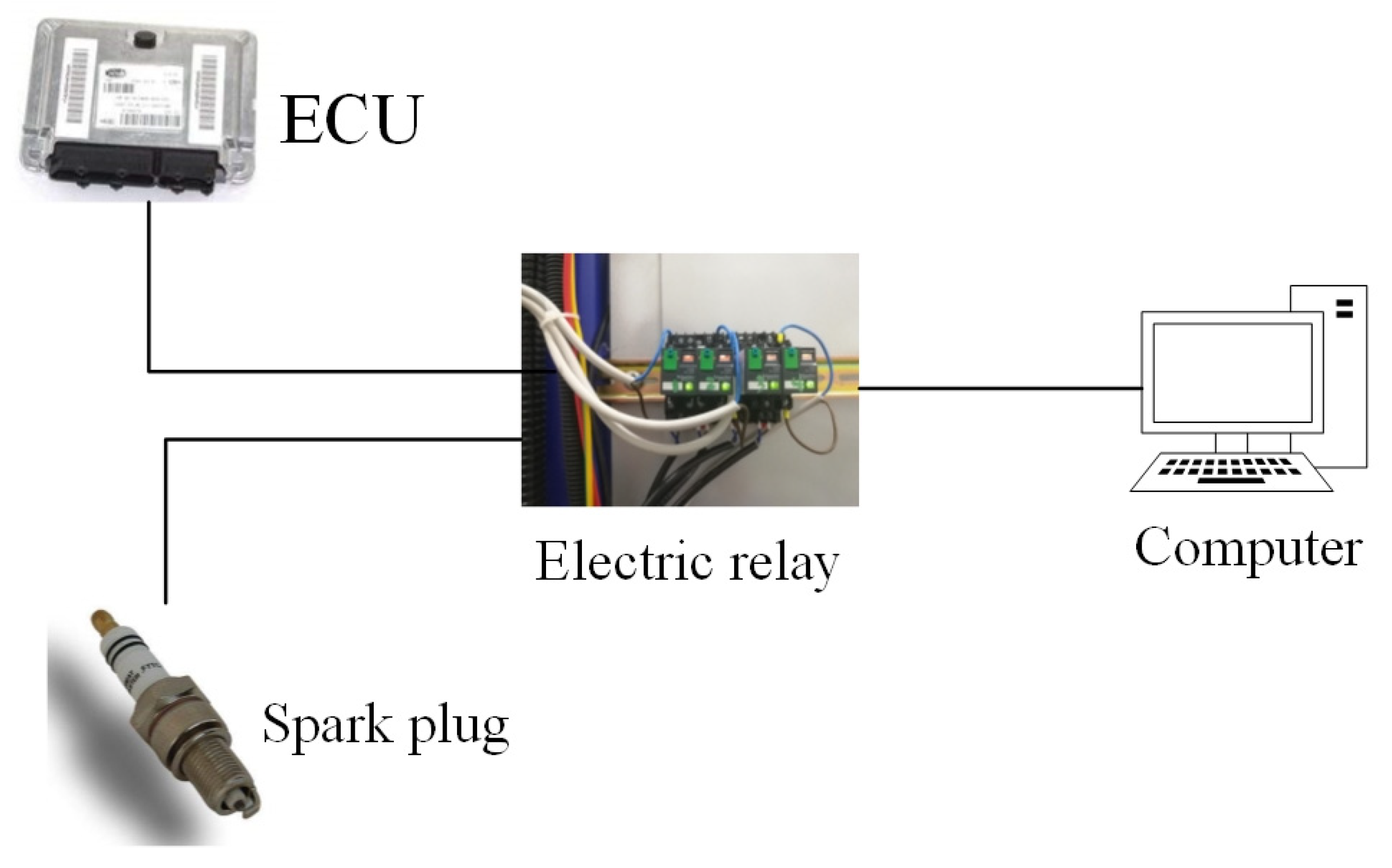
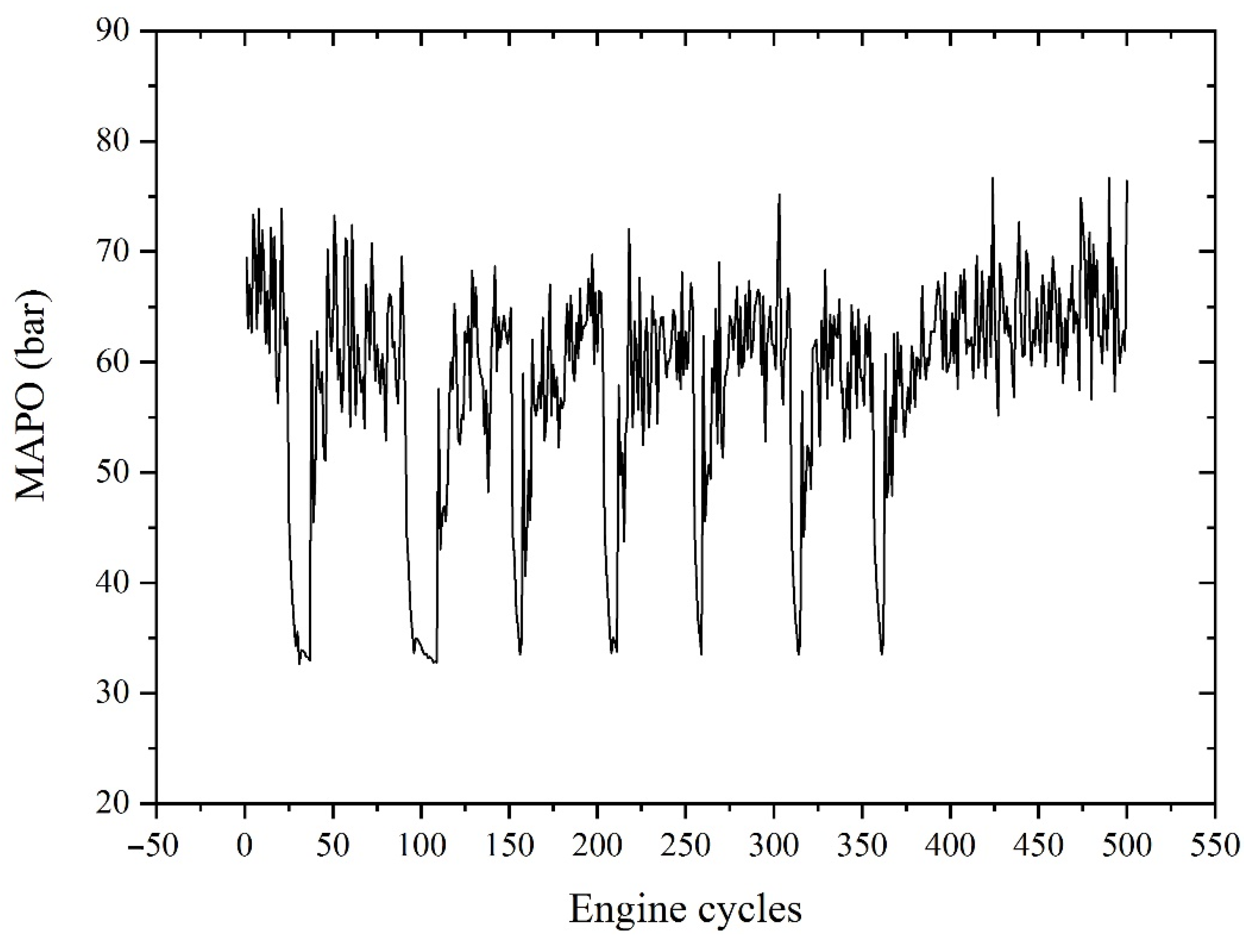
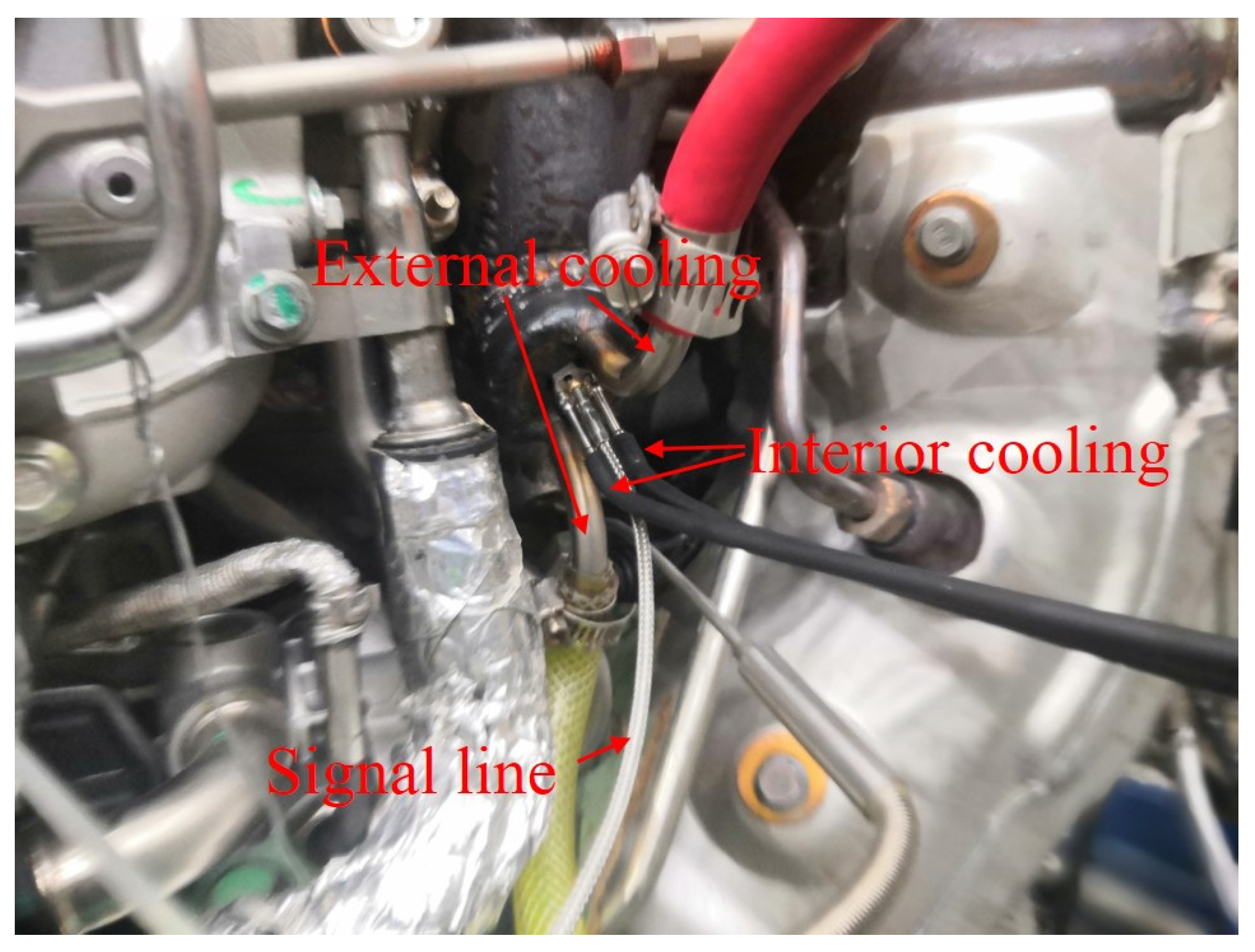
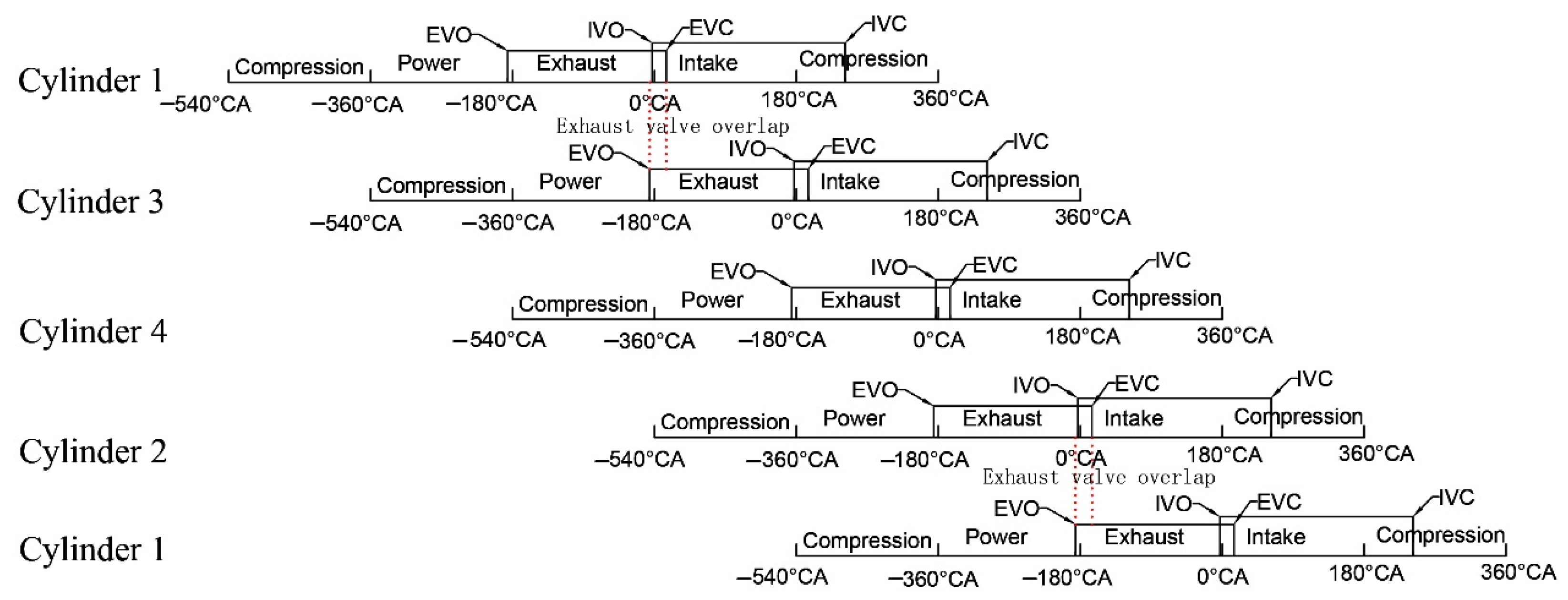

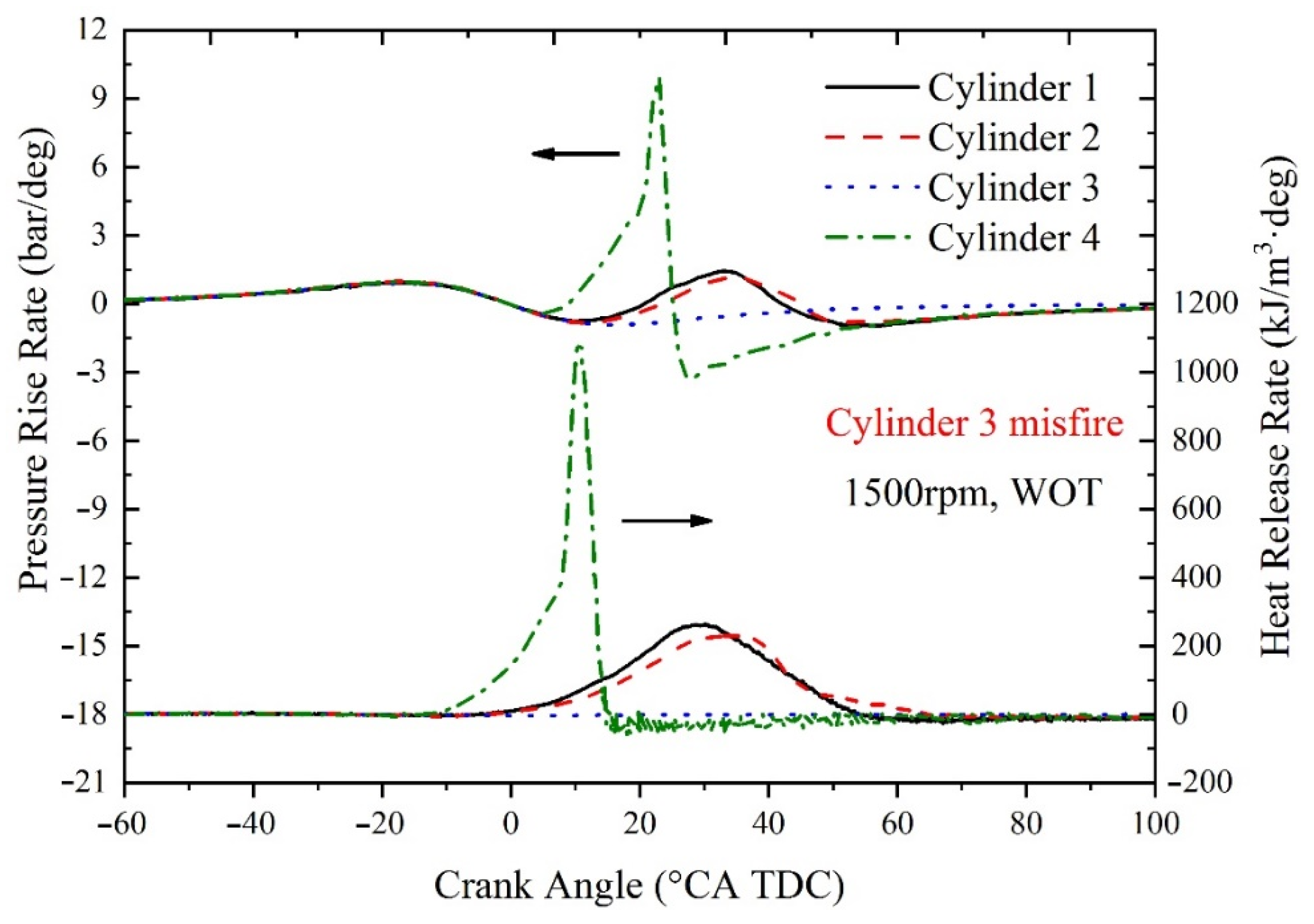

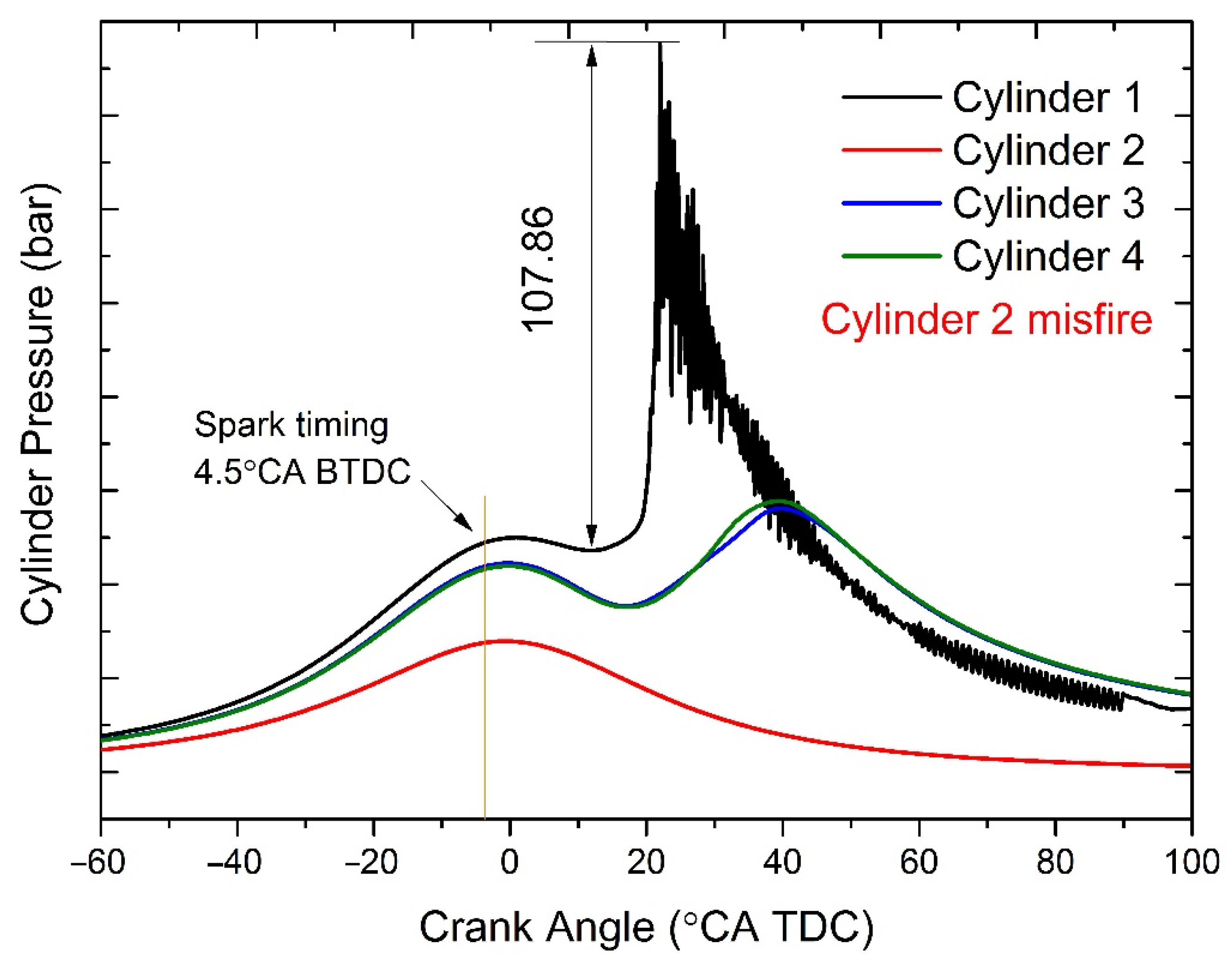
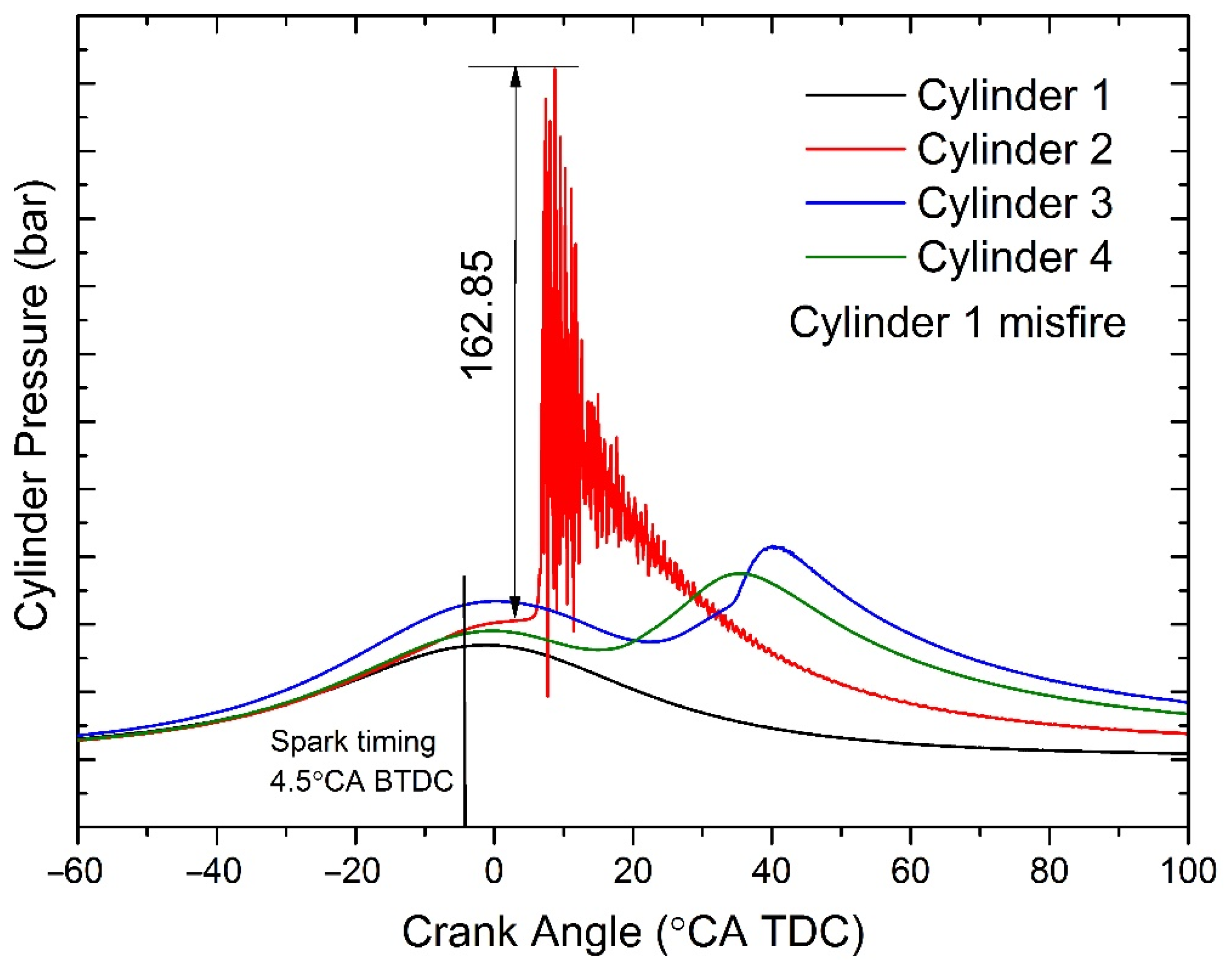

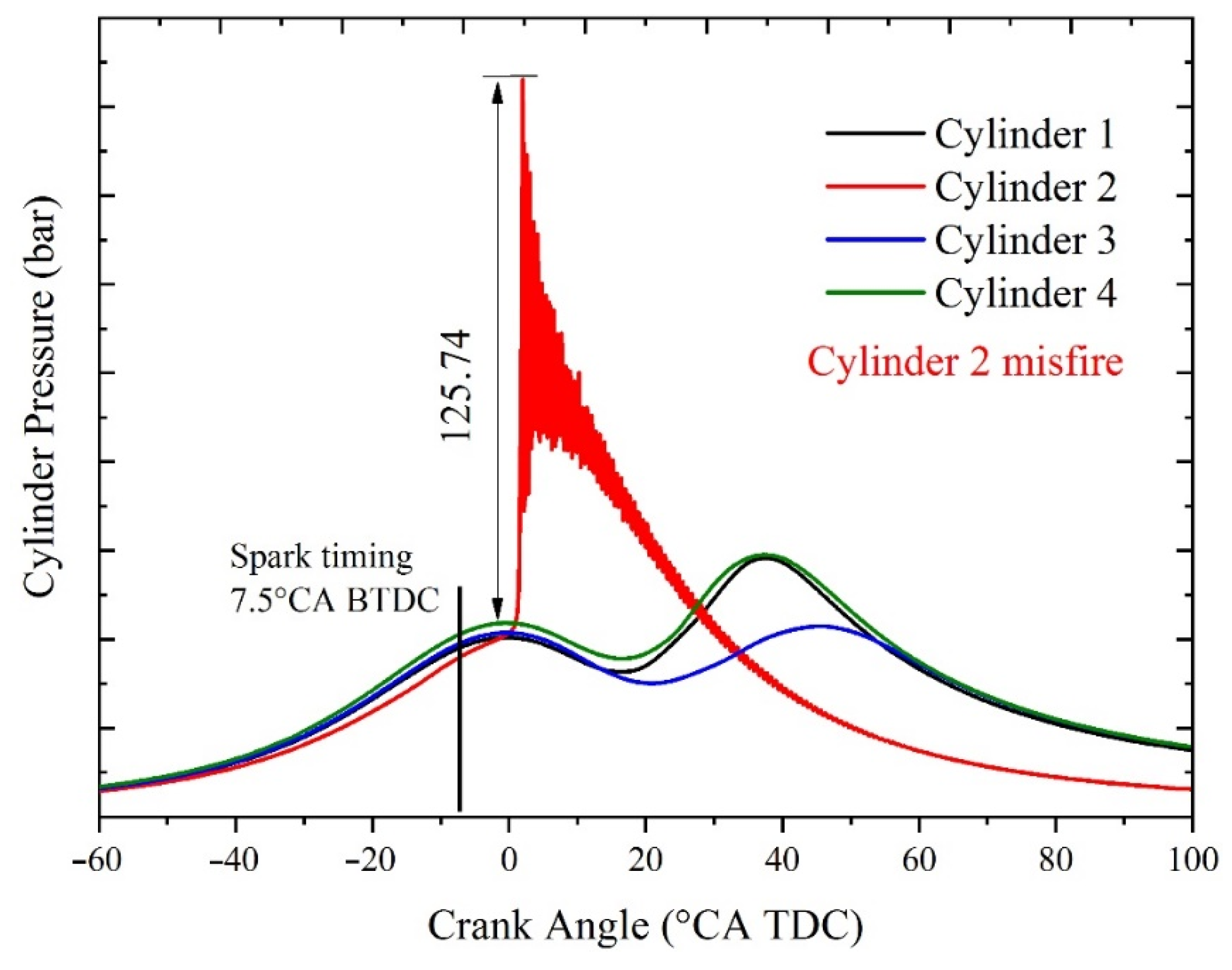
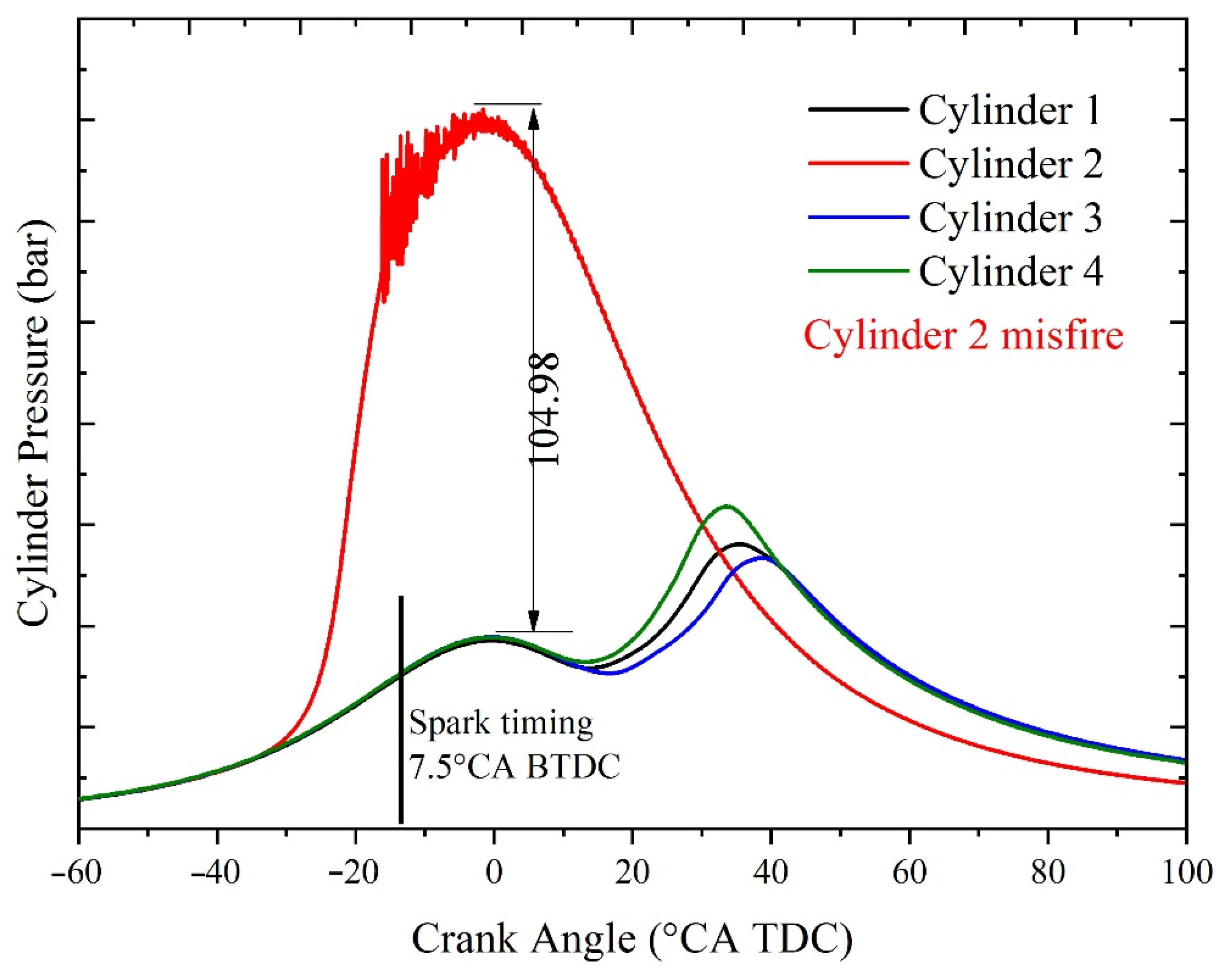
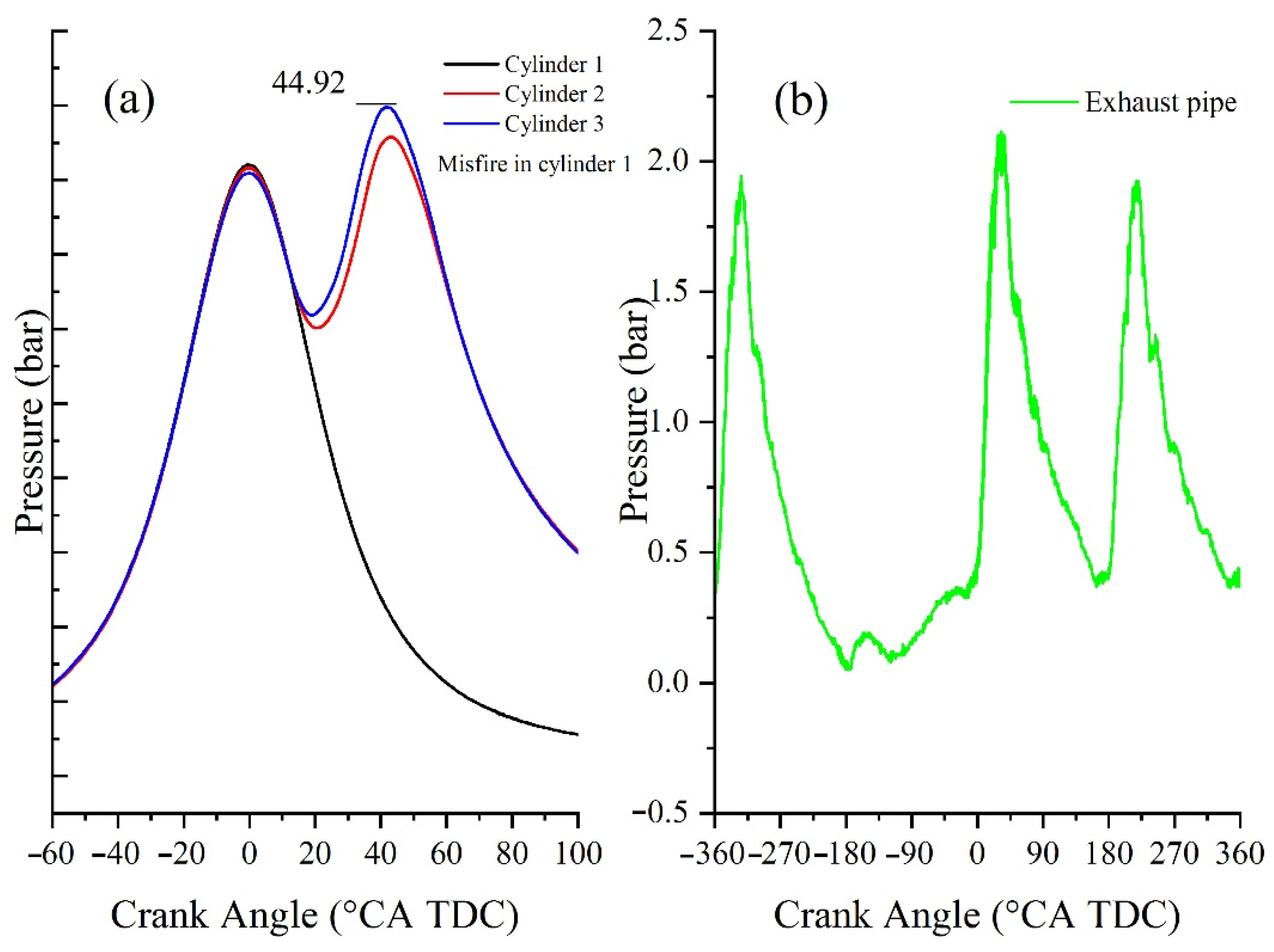
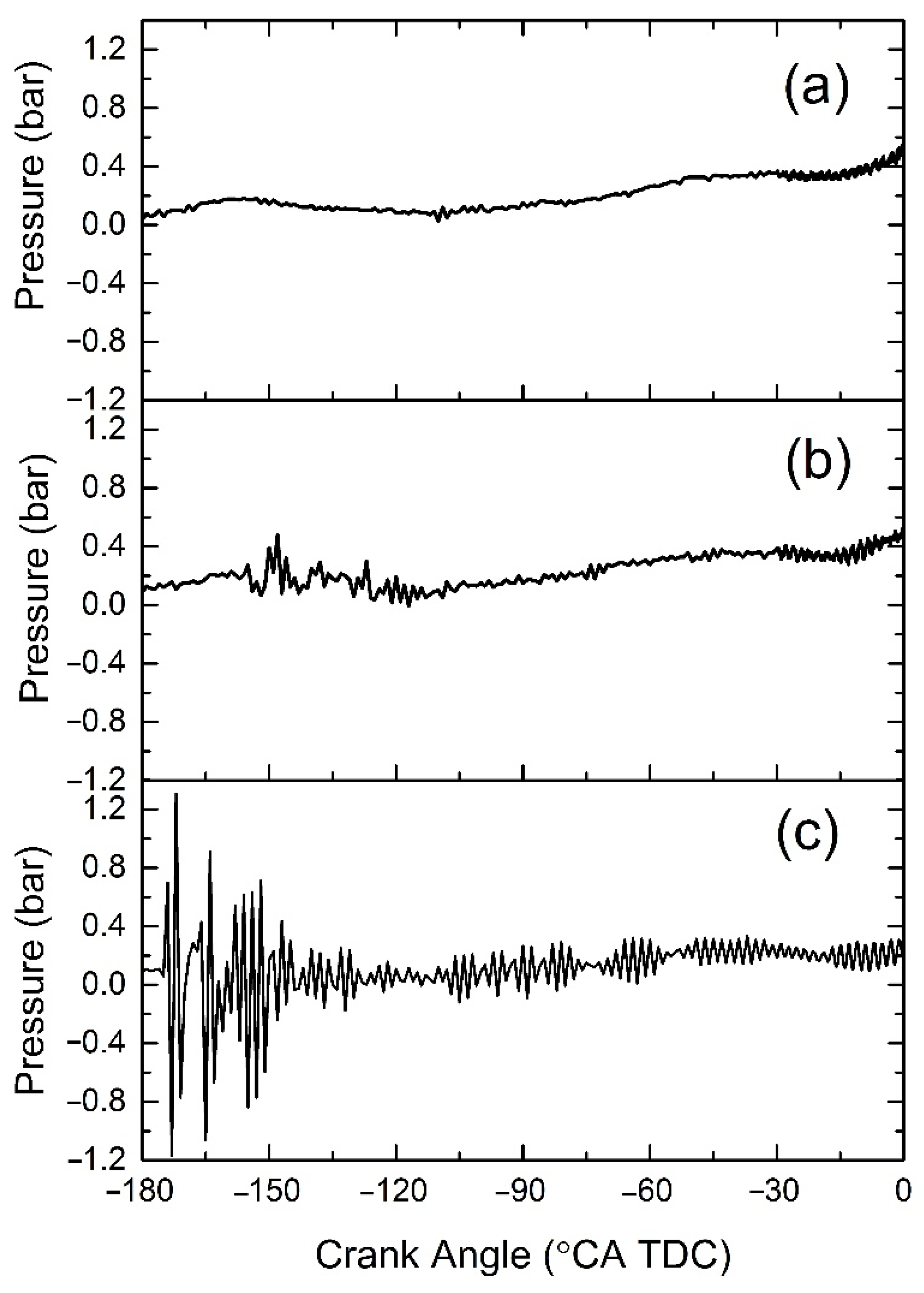
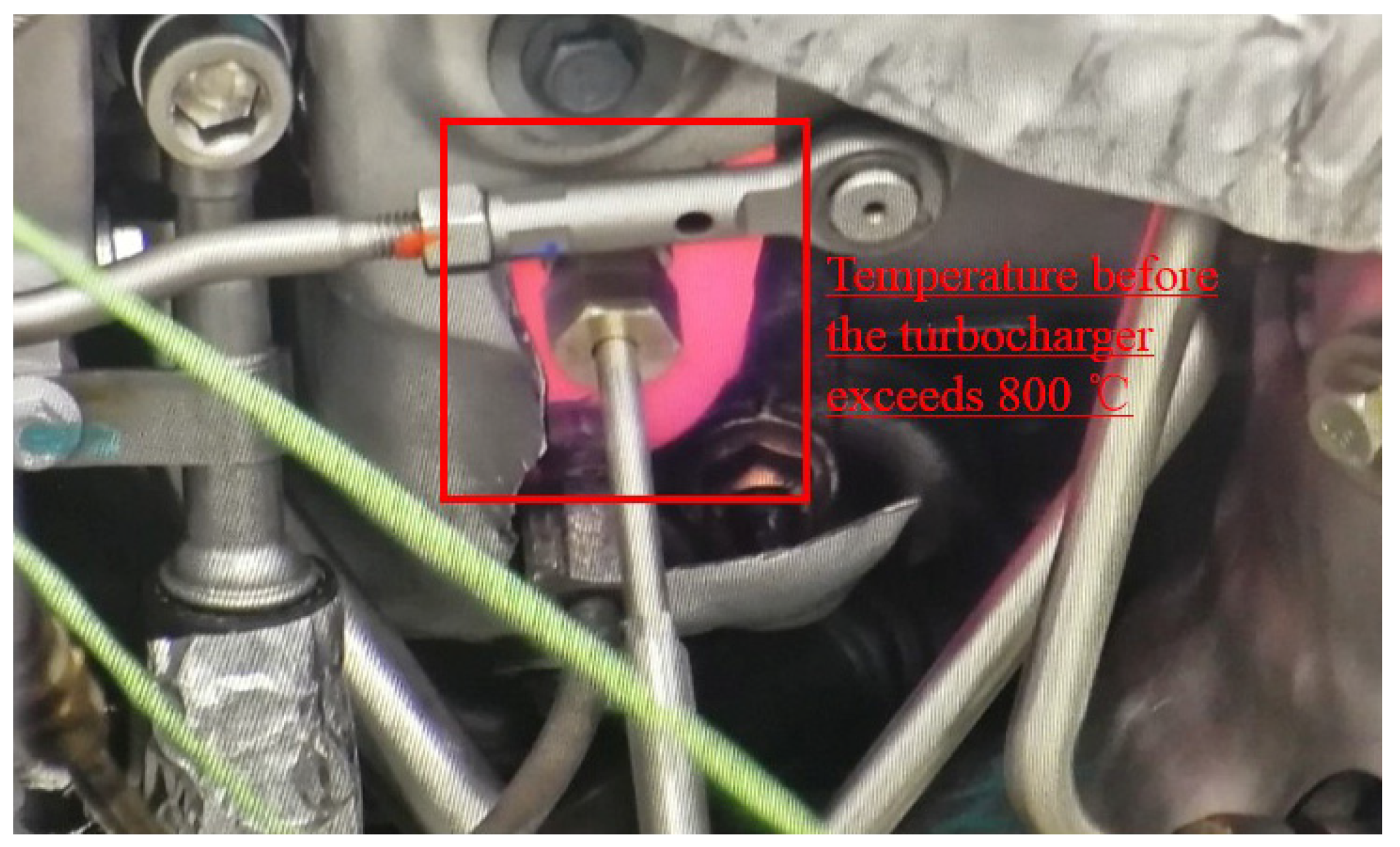

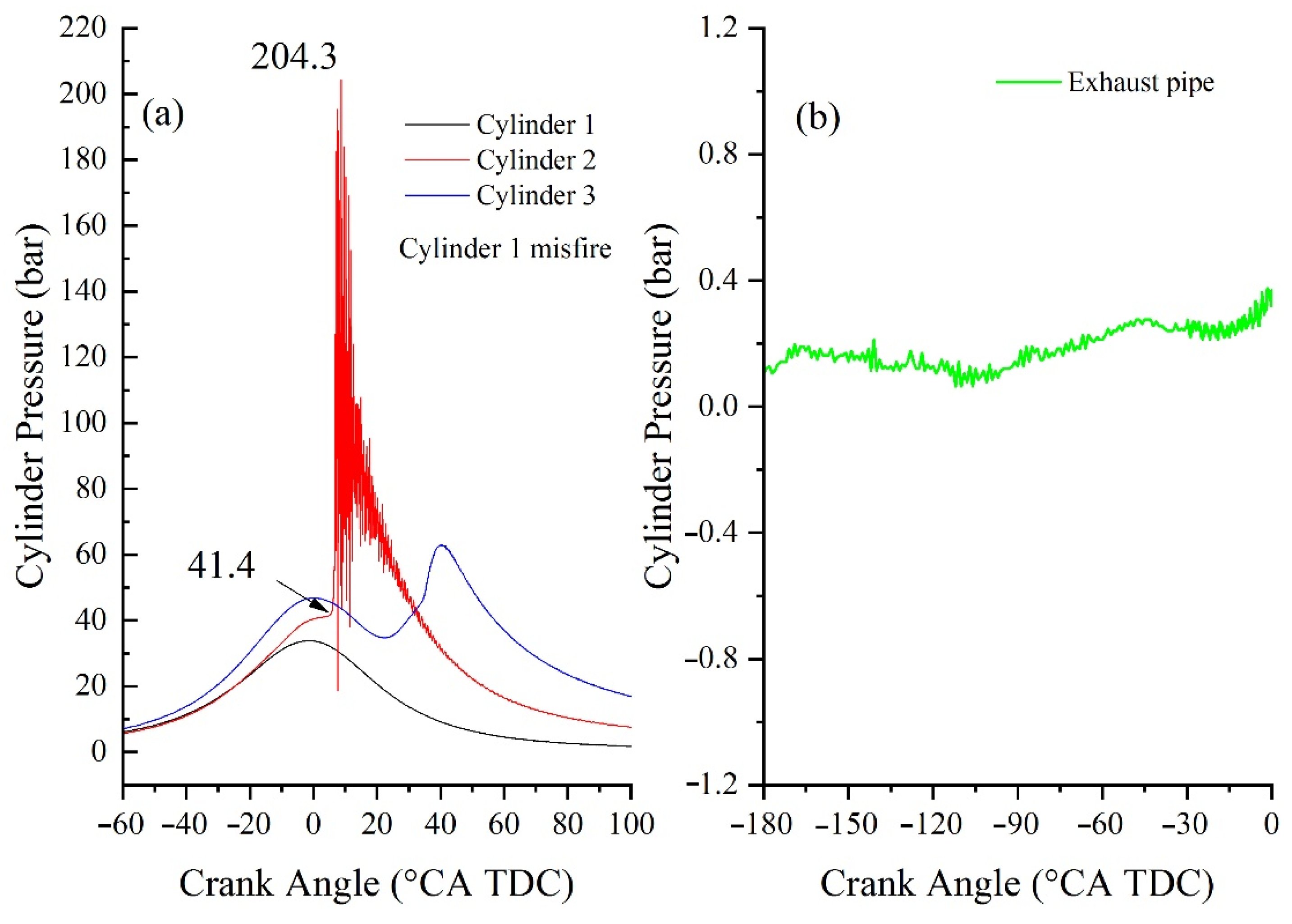
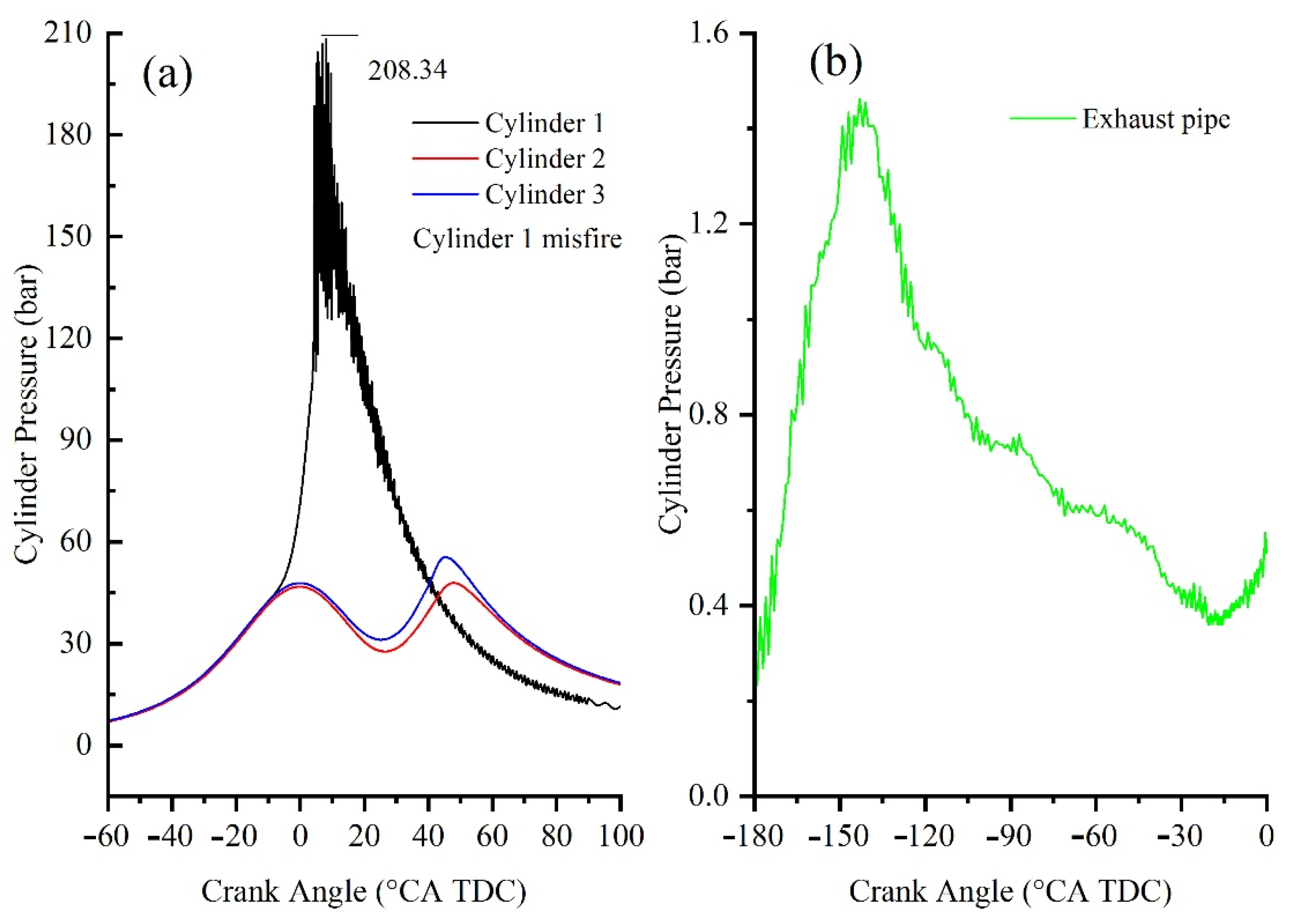
Publisher’s Note: MDPI stays neutral with regard to jurisdictional claims in published maps and institutional affiliations. |
© 2021 by the authors. Licensee MDPI, Basel, Switzerland. This article is an open access article distributed under the terms and conditions of the Creative Commons Attribution (CC BY) license (https://creativecommons.org/licenses/by/4.0/).
Share and Cite
Gao, J.; Yao, A.; Zhang, Y.; Qu, G.; Yao, C.; Zhang, S.; Li, D. Investigation into the Relationship between Super-Knock and Misfires in an SI GDI Engine. Energies 2021, 14, 2099. https://doi.org/10.3390/en14082099
Gao J, Yao A, Zhang Y, Qu G, Yao C, Zhang S, Li D. Investigation into the Relationship between Super-Knock and Misfires in an SI GDI Engine. Energies. 2021; 14(8):2099. https://doi.org/10.3390/en14082099
Chicago/Turabian StyleGao, Jian, Anren Yao, Yeyi Zhang, Guofan Qu, Chunde Yao, Shemin Zhang, and Dongsheng Li. 2021. "Investigation into the Relationship between Super-Knock and Misfires in an SI GDI Engine" Energies 14, no. 8: 2099. https://doi.org/10.3390/en14082099
APA StyleGao, J., Yao, A., Zhang, Y., Qu, G., Yao, C., Zhang, S., & Li, D. (2021). Investigation into the Relationship between Super-Knock and Misfires in an SI GDI Engine. Energies, 14(8), 2099. https://doi.org/10.3390/en14082099





